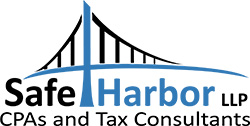February 28, 2013. Executive Summary. Many small businesses in the San Francisco Bay Area engage in leases. But not all realize that how a lease is structured can have an enormous impact on how, and whether you can ‘expense’ the lease over the term of the lease as a business expense. This can in turn influence any loan covenants. In this blog post, we explore proposed changes to how leases are dealt with.

The Financial Accounting Standards Board (FASB), along with the International Accounting Standards Board (IASB), have a joint project to make a common leasing standard. They cite that objective is to ensure consistent lease accounting across sectors and industries, in order to improve the quality and comparability of financial reporting.
The proposed standard has one accounting model for all leases:
- The balance sheet will have a "right-of-use" asset. The "right-of-use" asset is amortized on a straight-line basis over the life of the lease and amortization expense is recognized accordingly.
- The balance sheet will also have a liability for future payments. When cash is paid towards the lease, the lease liability decreases and a portion of the payment is booked to interest expense.
- The cash flows statement will classify all outflows as financing activities.
- The financial statements disclosures will explain the amounts recognized in the financial statements and the effects on cash flows.
Users of financial statements often calculate simple ratios to assess the financial condition of the company. The impact to financial statement ratios for this change in lease accounting may result in the following:
- Decrease in the Current Ratio
- Increase in Debt to Equity Ratio
- Decrease in Asset Turnover
- Decrease in Return on Equity
Proponents for the change note that when there is an operating lease, there is a lack of recognition of the company’s future obligation to the lessor, and therefore a lack in transparency in the assessment of future cash flows related to those leases. Proponents believe there will be an increase in financial statement accuracy and that users will benefit from better information concerning expected cash flows. Preparers will benefit from a simplified lease accounting standard by having just one method of accounting by the lessees.
Those opposed to the new standard express concern about increased administrative costs for entities with a large volume of leases. Opponents are also concerned that it will result in significant costs due to compliance and implementation. They say the benefits will not outweigh the costs.
Expect more to come as the current technical plan for active joint FASB/IASB projects for 2013 shows the due process moving towards finalizing the standard.
We at G & J Seiberlich & Co LLP and Safe Harbor LLP provide accounting and financial statement reporting services for our winery, construction, retail, manufacturing, high tech, nonprofit and other industry clients with varying types of lease arrangements in the San Francisco Bay Area. When the time comes, we can provide your organization with the expertise necessary to analyze your leases for proper reporting, as well as other accounting and consulting on technical areas.
If you need additional information regarding this article, contact Wendell (Dell) R. Coats, Partner at G & J Seiberlich & Co LLP at 707-224-7948, or Chun Wong at Safe Harbor LLP at 415-742-4249.

